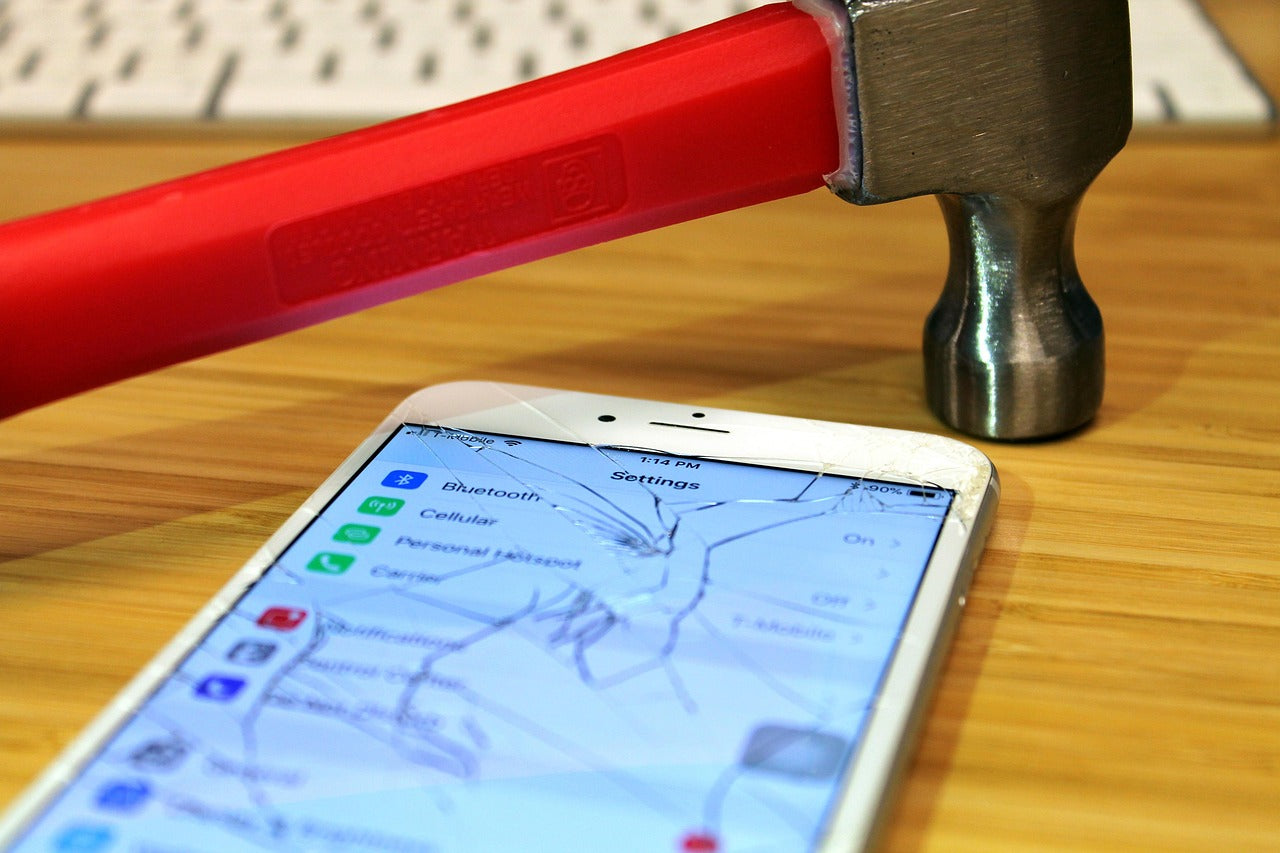At Imfixed, we understand how frustrating it is when your iPhone screen gets damaged. It might seem like a minor cosmetic issue, but even small cracks can lead to serious problems down the line, such as fading brightness, unresponsive touch, and hidden internal damage. If left unattended, it could even lead to a complete display failure or costly hardware faults. So, what should you do when your iPhone screen breaks?
Start with a Few Quick Fixes
If your screen is unresponsive, you might be able to try a forced restart. This helps eliminate temporary glitches. The button combination depends on your model, on newer iPhones, press the volume up, volume down, then hold the power button. For older models, hold down the home and power button together.
Disconnect any accessories like charging cables or headphones, as these can occasionally interfere with screen functionality, especially if they’re non-certified or poorly made.
Give your screen a proper clean. iPhone touchscreens rely on capacitive sensors, and grime, moisture or dirt can affect how they respond. Gently wipe the screen and dry your hands before testing again.
It’s also worth checking your screen protector or case. If it's too thick or misaligned, it may affect touch sensitivity. Remove these extras to see if the problem clears.
The Signs You Need a Professional iPhone Screen Repair

Even if your iPhone still functions, several warning signs point to the need for a screen replacement:
-
Cracks or visible damage: These may lead to display failure or moisture damage.
-
Flickering display: This might indicate internal connection issues.
-
Delayed or unresponsive touch: A clear sign that the digitiser is failing.
-
Overheating: Often linked to deeper hardware issues tied to screen damage.
-
Discolouration or poor picture quality: This could signal LCD damage.
- Ghost touches or rogue app launches: A failing touch sensor might be the cause.
If you're noticing any of these issues, don’t delay, visit our team at Imfixed for a quick and professional assessment.
Is It the Glass or the LCD?
When an iPhone is dropped, the glass screen might crack, but the underlying LCD can remain intact, or vice versa. Here’s the difference:
- The glass is the outer protective layer, and while it's tough, it's still prone to cracks.
- The LCD controls the display and touch functionality. If your phone shows black spots, discoloured patches, or lines, or stops responding to touch, the LCD is likely damaged.
We can help you identify exactly which part needs replacing, saving you time and money with the right fix.
Should You Try a DIY Repair?
There are iPhone screen repair kits available online, but unless you're confident and experienced with tech repairs, we don't recommend going the DIY route. One wrong move and your iPhone could stop working entirely.
These kits typically require:
- Special screwdrivers
- Heating elements
- Suction tools
- Pry tools
Even after replacing the screen, you’ll need to reapply adhesive and reconnect all internal components, it's fiddly and risky. Instead of gambling with your phone, trust our trained technicians at Imfixed to carry out a precise, high-quality screen repair.
Why Choose Imfixed for iPhone Screen Repairs?

Rather than paying Apple’s high repair costs, up to £316.44 for newer models, you can rely on Imfixed for an affordable, reliable solution. We only use top-grade parts, and all repairs are handled by qualified professionals with years of experience.
With us, you get:
- A no-fuss repair service
- Fair and transparent pricing
- Internal diagnostics to catch hidden faults
- A fast turnaround, most repairs completed same day!
Check out our iPhone Repair services to find your model and get started.
Why You Shouldn’t Ignore a Broken Screen
Delaying your screen repair could lead to:
-
Internal damage from dust, moisture or pressure entering through cracks.
-
Electric shock risks or cuts from exposed glass shards.
- Gradual loss of screen sensitivity and functionality.
Your iPhone is too valuable to leave at risk. If your screen is damaged, even slightly, get in touch with our team at Imfixed straight away.
We're Here to Help
We repair most iPhone models and serve customers throughout Greater Manchester. Whether you drop your phone, it suffers water damage or screen burnout, we’re here with pickup, drop-off and postal repair options. Find your repair solution on our iPhone Repair page or reach out directly.
📞 Call us on 01204 520520
📧 Or email us at info@imfixed.co.uk
Let’s get your iPhone back to brilliant condition, fast.


Share:
Can you fix your own phone screen?
My Mac's screen isn't turning on: Here's how to fix it